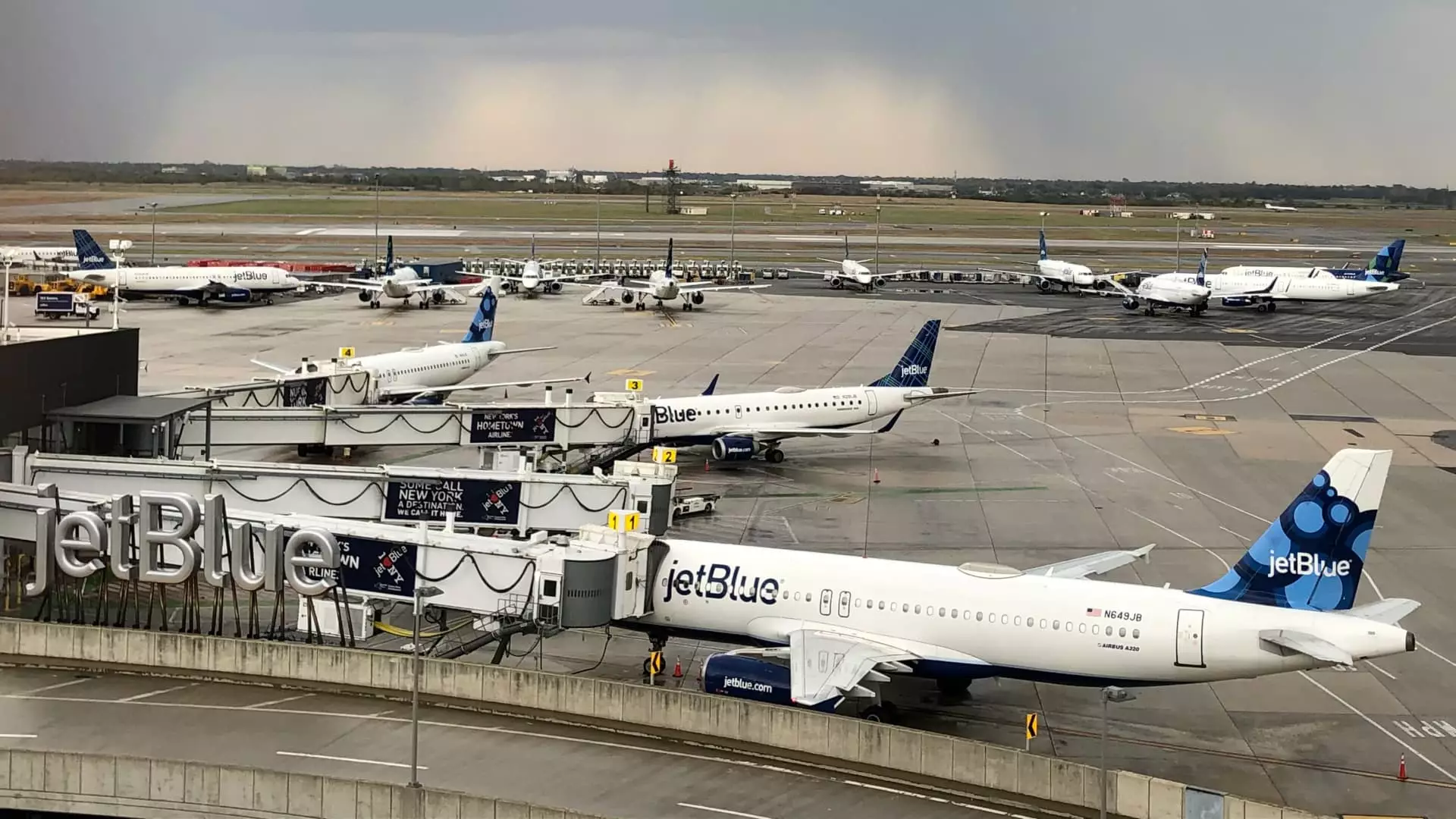In a significant departure from its traditional low-cost model, JetBlue Airways is making headlines with the announcement of its first airport lounges, marking a new chapter in the airline’s over two-decade history. With a strategic focus on attracting affluent travelers, JetBlue plans to inaugurate these lounges in late 2024 at New York’s John F. Kennedy International Airport, followed shortly by Boston Logan International Airport. This pivot is emblematic of a broader trend among budget airlines that are seeking to enhance their appeal to high-spending customers as they navigate the complexities of a recovering travel market.
Tapping into the Premium Travel Sector
The addition of exclusive lounges is not merely a cosmetic upgrade for JetBlue; it is a calculated move that aligns with industry standards established by major competitors such as Delta, United, and American Airlines. These established carriers have demonstrated the lucrative potential of premium travel products, with their credit card partnerships generating billions of dollars. JetBlue’s new premium credit card, to be launched in conjunction with Barclays, aims to tap into this lucrative revenue stream, potentially reshaping the airline’s financial landscape while catering to its growing number of high-value clientele.
JetBlue’s lounges, the details of which have been carefully curated to enhance the passenger experience, will include features like cocktail and espresso bars, light snacks, and dedicated workspace areas. This blend of relaxation and productivity caters to the modern traveler who seeks comfort without compromising on work commitments, a trend that many airlines are noticing as they revamp their service offerings.
However, JetBlue’s approach to lounge access will come with limitations, at least initially. As highlighted by Jayne O’Brien, the company’s head of marketing, entry to these exclusive spaces will be restricted to patrons flying in JetBlue’s Mint business class on transatlantic routes, premium credit card holders, and those with the highest-tier loyalty status. This selective access ensures a more controlled environment, thereby mitigating overcrowding concerns that could detract from the lounge experience.
O’Brien’s comment about being “thoughtful” in their expansion speaks volumes about JetBlue’s intent to avoid the pitfalls that have plagued other airlines’ lounges, particularly in light of long wait times and customer dissatisfaction over access. By focusing on providing a premium experience rather than simply maximizing entry, JetBlue is attempting to strike a balance that enhances brand loyalty among its most valuable passengers.
JetBlue’s lounge initiative is part of a larger industry trend where airlines aim to revamp and expand their amenities to attract bigger spenders. Delta’s recent launch of its Delta One lounge exclusively for high-tier customers at JFK and revisions in access to Sky Clubs respond to growing consumer expectations for exclusivity and comfort. Similarly, American Airlines and United Airlines have invested in dedicated lounges for front- and business-class travelers, illustrating the competitive landscape in which JetBlue is now operating.
In addition to these established airlines, credit card corporations like American Express and Capital One have begun establishing their airport lounges as well, attempting to capitalize on a growing consumer demand for premium travel experiences. This broader movement among both airlines and credit card companies underscores the increasing importance of customer experience in an evolving travel ecosystem.
JetBlue is not alone in its efforts to diversify offerings in the face of a competitive market. Southwest Airlines, for instance, is shifting gears by planning to introduce extra legroom seats, signaling its intention to modernize and enhance its service portfolio. Furthermore, ultra-low-cost carriers like Spirit Airlines and Frontier Airlines are also experimenting with bundled offerings to entice consumers willing to pay more for added comfort and convenience.
As JetBlue prepares to roll out its lounges and premium card offerings, the airline must navigate the delicate balance of upholding its core low-cost identity while simultaneously appealing to a more affluent customer base. The upcoming years will be integral in determining how successful this strategy will be, as it reflects not only JetBlue’s ambitions but also the broader evolution of the airline industry. In a world where air travel experiences are increasingly scrutinized, JetBlue’s new initiatives may just set a compelling benchmark for future low-cost carrier transformations.


Leave a Reply